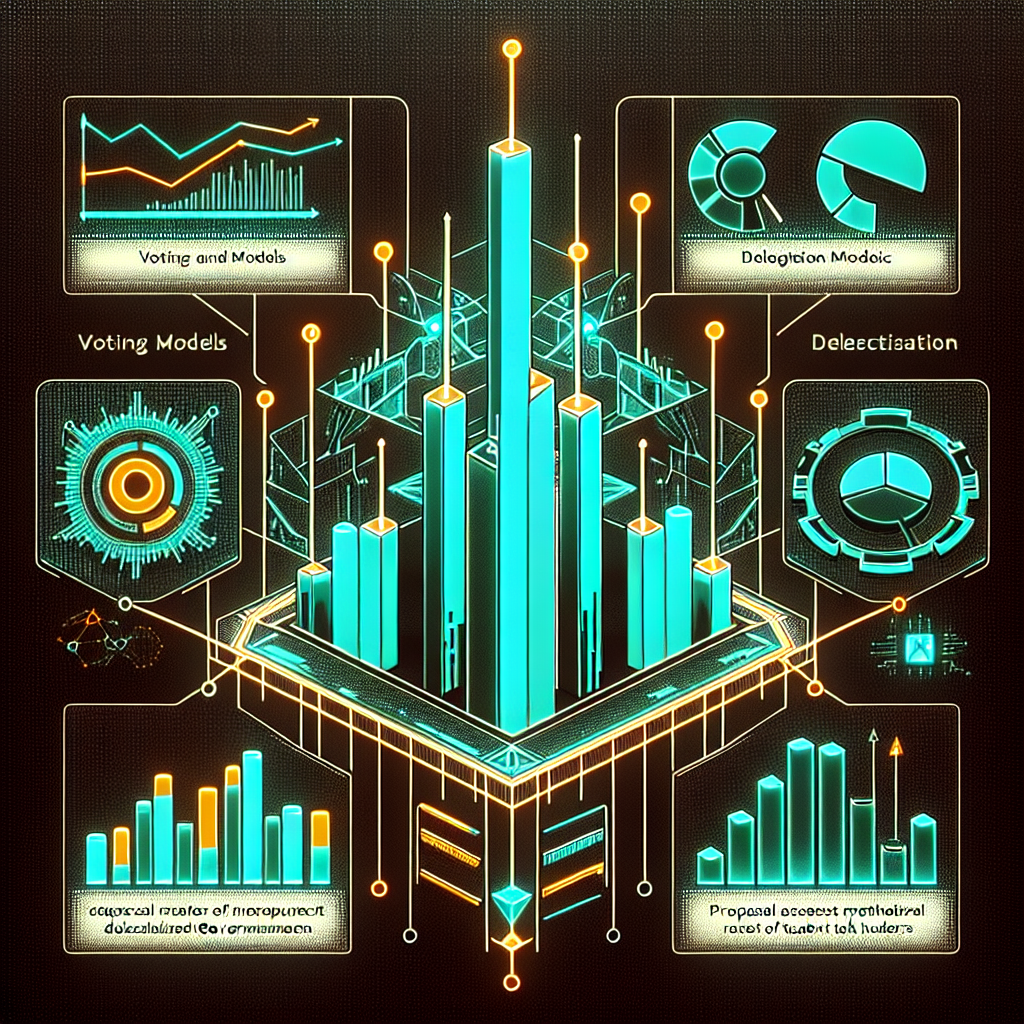DAO Governance Essentials: Voting Power Models, Delegation Mechanics, and Proposal Assessment for Informed Token Holders

Introduction: Why Governance Matters in a DAO
Decentralized Autonomous Organizations (DAOs) promise community-driven decision-making that is transparent, borderless, and resistant to unilateral control. Yet the lofty vision only materializes when token holders understand the mechanics that translate their economic stake into real influence. This article explores the three pillars every participant should master: voting power models, delegation mechanics, and proposal assessment. By the end, you will know how to evaluate a DAO’s governance design, optimize your own voting strategy, and safeguard the long-term health of the protocols you support.
Voting Power Models: How Tokens Turn Into Influence
1. One Token, One Vote (1T1V)
The most common model, One Token, One Vote, assigns direct voting weight proportional to token balance. Simplicity and familiarity attract early adopters, and on-chain implementation is straightforward. However, 1T1V often leads to plutocracy, where large holders dominate outcomes. Small stakeholders can be discouraged, reducing community engagement and leaving the DAO exposed to governance capture. When assessing a DAO, check whether it contains quorum requirements, time locks, or super-majority thresholds to counterbalance disproportionate power and protect against hasty decisions.
2. Quadratic Voting
Quadratic Voting attempts to amplify the voice of smaller holders by making the cost of each additional vote rise quadratically. For example, casting four votes costs 16 tokens, whereas one vote costs only one. This pricing curve disincentivizes whales from overwhelming the process and encourages more nuanced signaling. Despite its elegance, quadratic voting is vulnerable to Sybil attacks, where a large holder splits tokens across multiple wallets to sidestep the cost curve. Robust identity or reputation layers are therefore critical; without them, the model can be gamed.
3. Reputation-Based & Stake-Time Models
Some DAOs integrate non-transferrable reputation scores or time-weighted stakes. A reputation score might grow each time a member contributes code, attends calls, or participates in votes, aligning influence with proven commitment. Stake-time models reward long-term holders by amplifying voting power the longer tokens remain staked. Both approaches promote skin in the game and discourage short-term speculation, yet they add complexity to smart contracts and increase the mental load on voters. Before buying into such a DAO, scrutinize the transparency of reputation calculations and whether staking contracts have undergone rigorous audits.
Delegation Mechanics: Scaling Participation Through Proxies
1. The Rationale for Delegation
While the average token holder may support a project’s mission, they rarely have the bandwidth to review every proposal. Delegation allows stakeholders to entrust their voting power to a representative, freeing them from day-to-day obligations while preserving collective intelligence. A healthy delegation layer can dramatically improve voter turnout and proposal quality because professional delegates, also known as protocol politicians, devote time to research, forum debate, and post-mortems.
2. Delegation UX and Smart-Contract Design
Delegation contracts should be trustless and reversible. Preferred features include: (a) gas-efficient delegation transactions; (b) the ability to delegate to yourself to reset proxy influence; (c) partial delegation to multiple representatives, enabling portfolio-style governance. Snapshot, Compound Governor, and OpenZeppelin Governor contracts offer battle-tested templates. Pay attention to whether delegated votes are live-counted or snapshotted at the start of each voting period; the former can deter last-minute token transfers that manipulate outcomes.
3. Accountability and Delegate Incentives
Delegation only works when delegates remain accountable. On-chain voting records, forum transparency, and periodic compensation reports keep representatives honest. Many DAOs implement delegate slashing for proven misconduct or introduce ‘rage-quit’ options letting delegators withdraw if a delegate votes contrary to instructions. Look for structured incentive programs—stipends, retroactive grants, or share of protocol fees—that motivate delegates without compromising independence. If a DAO fails to publish regular delegate activity dashboards, consider lobbying for that feature or withholding delegation.
Proposal Assessment: From Idea to On-Chain Execution
1. Drafting and Signaling Phases
High-performing DAOs use a multi-stage funnel: an informal forum post, a Request for Comment (RFC), a temperature check, and finally the on-chain vote. This process filters out weak ideas early and aligns community expectations. When evaluating a proposal, examine whether problem statements are clearly defined, success metrics are measurable, and budgeting is realistic. A well-structured draft often signals the competence of the authors and the seriousness of the initiative.
2. Quantitative and Qualitative Due Diligence
Beyond narrative, informed voters dive into data. For financial proposals, analyze projected ROI, token emissions, and treasury runway. For technical upgrades, consult audits, formal verification reports, and testnet results. Qualitative checks include team reputation and alignment with the DAO’s mission. Many communities leverage scorecards that weight factors such as strategic fit (30%), risk (25%), cost (25%), and community sentiment (20%). Adopting such frameworks helps standardize assessments and mitigates cognitive biases.
3. Post-Vote Monitoring and Feedback Loops
Governance does not end at execution. Progressive decentralization mandates monitoring key performance indicators (KPIs) linked to each passed proposal. DAO tooling like Dune dashboards, OpenZeppelin Defender, and Messari Governor can automate alerts on treasury outflows and milestone completion. Feedback loops—retrospectives, AMAs with proposers, and course-correction votes—transform governance from episodic events into continuous improvement cycles. As a token holder, advocate for transparent post-vote reporting; it keeps stewards accountable and sharpens future decision-making.
Best Practices for Empowered Token Holders
1. Diversify Your DAO Portfolio: Spread risk across multiple communities and governance models.
2. Calendar Governance Milestones: Sync proposal timelines with personal reminders to avoid missing key votes.
3. Engage Early, Not Just at Snapshot: Early feedback shapes proposals before positions harden.
4. Choose Delegates Carefully: Review track records and policy platforms, much like traditional elections.
5. Demand Transparency: Push for open analytics on voting power distribution, delegate behavior, and treasury flows.
Conclusion: From Passive Holder to Active Steward
DAO governance is both an art and a science. Understanding voting power models helps you spot hidden concentration risks; mastering delegation mechanics scales your influence without sacrificing autonomy; and rigorous proposal assessment ensures funds and protocol changes align with long-term value creation. By applying these essentials, token holders transform from passive speculators into active stewards, fortifying the resilience and legitimacy of decentralized organizations worldwide.